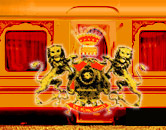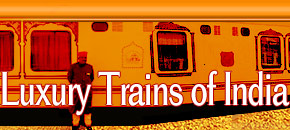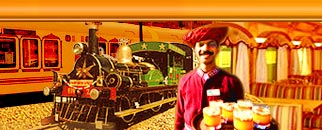Goa is one of India's favorite tourist destinations. The Goa travel guide showcases different facets of Goa tourism.
Home: Goa
Goa
The state of Goa is located on the western coast of India in the coastal belt known as Konkan. Goa is variously known as "Pearl of the Orient" and a "Tourist Paradise". The magnificent scenic beauty and the architectural splendors of its temples, churches and old houses have made Goa a firm favorite with travelers around the world.
Goa is much more than just beaches and sea. It has a soul, which goes deep into unique history, rich culture and some of the prettiest natural scenery that India has to offer. Much of the real Goa is in its interiors, both inside its buildings and in the hinterland away from the coastal area.
Goa was liberated by the Indian Army from Portuguese colonization on December 19, 1961 and became a Union Territory along with the enclaves of Daman and Diu. On May 30, 1987 Goa was conferred statehood and became the 25th state of the Indian Republic. Having been the meeting point of races, religions and cultures of East and West over the centuries, Goa has a multi-hued and distinctive lifestyle quite different from the rest of India. Hindu and Catholic communities make up almost the entire population with minority representation of Muslims and other religions.
All the communities have mutual respect towards one another and their secular outlook has given Goa a long and an unbroken tradition of religious harmony. The warm and tolerant nature of the Goans allows them to celebrate and enjoy the festivals of various religions such as Ganesh Chaturthi, Diwali, Christmas, Easter and Id with equal enthusiasm.
Panaji (Panjim) is the state capital located on the banks of the Mandovi river and Vasco, Margao, Mapusa and Ponda are the other major towns. Goa is serviced by an international/national airport located at Dabolim near Vasco. An intra-state and inter-state bus network also plays an important role in getting locals and visitors alike in and around Goa.
The vast green expanse of the Sahyadri mountain range ensures that Goa has an abundance of water. The sea and rivers abound in seafood - prawns, mackerels, sardines, crabs and lobsters are the most popular with the locals and the visitors. Then the weather gets fairly hot around May and by end of June, Goa receives the full blast of the Indian monsoon with sudden downpours and tropical thunderstorms. However it is also during the monsoon that Goa is probably at its most beautiful, with greenery sprouting all around. Hotels in Goa offer special monsson packages as this is typically considered as off season in Goa.
Along with English which is widely spoken all over Goa, Konkani and Marathi are the state languages. The national language Hindi is also well understood in most areas around the state. Goan cuisine is a blend of different influences the Goans had to endure during the centuries. The staple food in Goa is fish and rice, both among the Hindus and the Catholics. Unlike the Christian food the Hindu Goan food is not strongly influenced by the Portuguese cuisine.
Goa is much more than just beaches and sea. It has a soul, which goes deep into unique history, rich culture and some of the prettiest natural scenery that India has to offer. Much of the real Goa is in its interiors, both inside its buildings and in the hinterland away from the coastal area.
Goa was liberated by the Indian Army from Portuguese colonization on December 19, 1961 and became a Union Territory along with the enclaves of Daman and Diu. On May 30, 1987 Goa was conferred statehood and became the 25th state of the Indian Republic. Having been the meeting point of races, religions and cultures of East and West over the centuries, Goa has a multi-hued and distinctive lifestyle quite different from the rest of India. Hindu and Catholic communities make up almost the entire population with minority representation of Muslims and other religions.
All the communities have mutual respect towards one another and their secular outlook has given Goa a long and an unbroken tradition of religious harmony. The warm and tolerant nature of the Goans allows them to celebrate and enjoy the festivals of various religions such as Ganesh Chaturthi, Diwali, Christmas, Easter and Id with equal enthusiasm.
Panaji (Panjim) is the state capital located on the banks of the Mandovi river and Vasco, Margao, Mapusa and Ponda are the other major towns. Goa is serviced by an international/national airport located at Dabolim near Vasco. An intra-state and inter-state bus network also plays an important role in getting locals and visitors alike in and around Goa.
The vast green expanse of the Sahyadri mountain range ensures that Goa has an abundance of water. The sea and rivers abound in seafood - prawns, mackerels, sardines, crabs and lobsters are the most popular with the locals and the visitors. Then the weather gets fairly hot around May and by end of June, Goa receives the full blast of the Indian monsoon with sudden downpours and tropical thunderstorms. However it is also during the monsoon that Goa is probably at its most beautiful, with greenery sprouting all around. Hotels in Goa offer special monsson packages as this is typically considered as off season in Goa.
Along with English which is widely spoken all over Goa, Konkani and Marathi are the state languages. The national language Hindi is also well understood in most areas around the state. Goan cuisine is a blend of different influences the Goans had to endure during the centuries. The staple food in Goa is fish and rice, both among the Hindus and the Catholics. Unlike the Christian food the Hindu Goan food is not strongly influenced by the Portuguese cuisine.
| Goa Travel: |
|---|
| Arts & Crafts of Goa | Beaches of Goa | Goa Carnival | Churches of Goa | Cities of Goa | Culture of Goa | Fairs & Festivals in Goa | History of Goa | Shopping in Goa | Wildlife in Goa |





